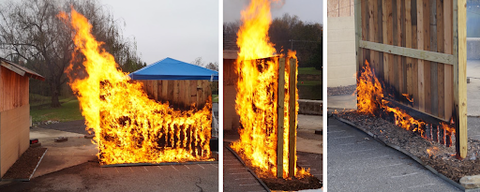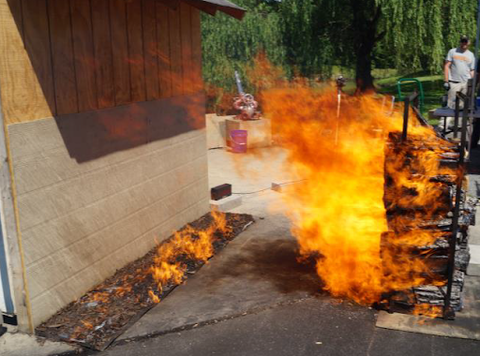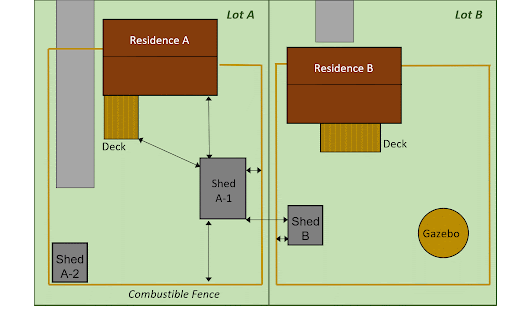Hazard from Fuel Agglomeration
Fuel agglomeration is the accumulation of fuels in proximity to each other that increase the fire hazard. Ignition of one object can easily spread to the nearby fuels, dramatically increasing the fire intensity and exposures presented to other nearby combustibles. Agglomeration can occur unintentionally, such as when multiple combustibles are moved to the edge of parcels to maintain sufficient distance to a primary structure. Other examples include situations where:
This issue is magnified on smaller, denser properties as illustrated in figures below.
-
Fences are installed parallel to each other
– Parallel fences burn with higher intensity thus increasing fire hazard
See NIST Technical Note 2228.
- Storage sheds are located close to each other
– Fire intensity increases when two sheds are on fire and are close together on two properties, fire then threatens the homes.
- Vehicles are parked next to structures or other combustibles
- Firewood piles and other combustibles are located away from homes but close to other fuels
– Wood piles can become a significant source of embers leading to spot fire ignitions and can spread fire to nearby structures. See NIST Technical Note 2251.


See NIST Technical Note 2251.
The combustible sheds and gazebo on two adjacent parcels, shown below, are spaced appropriately from the residences and other fuels, except fences, on their respective lots. However, Shed A-1 is too close to Residence B, and both sheds and the fences act as an agglomerated fuel package along the property border. If ignited, the sheds and fences will substantially increase the exposures from the red highlighted area, igniting the structures.

Increased spacing between combustibles lowers fire intensity which:
-
lowers the threat to homes and property
-
improves conditions for evacuations
-
helps first responders with rescues and suppression

